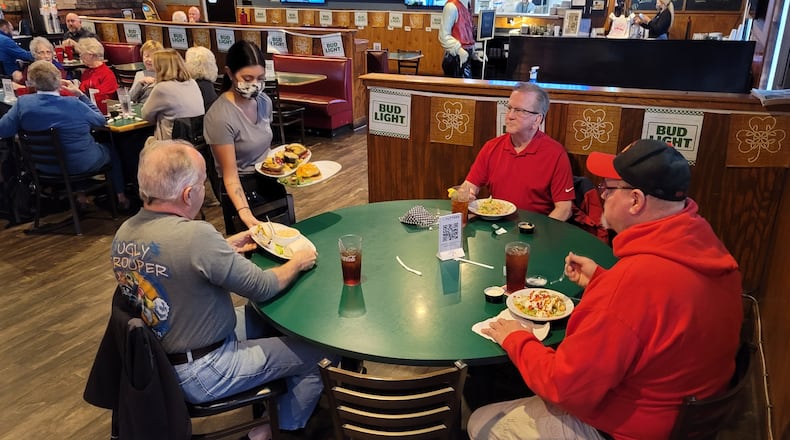Gov. Mike DeWine closed dine-in service in restaurants at the height of the pandemic, then issued earlier last-call times and statewide curfews that hurt how long patrons could stay and spend money. Restaurants also deal with reduced seating capacities due to social distancing and customers are required to wear masks when they’re not eating or drinking.
In the last year, about 4,600 Ohio restaurants, or 20 percent, have permanently or temporarily closed, according to the Ohio Restaurant Association.
“This has been an incredibly difficult time for our industry and our members, as well as Ohio’s entire restaurant, foodservice and hospitality industry,” said Homa Moheimani, a spokeswoman for the association. “There is a long road ahead for the industry.”
She said the Paycheck Protection Program, Economic Disaster Loads (EIDL) and Employee Retention Tax Credits (ERTC) hopefully will help restaurants owners “turn the corner towards recovery” during and after the pandemic.
Restaurant and bar owners wonder if business will ever return to “normal.”
To combat the loss of revenue due to COVID-19, some restaurants/bars have reduced their hours to save on overhead, cut staff, offered a limited menu and added daily specials.
Jan Collins, owner of Putters Sports Grill in Liberty Twp. and Maineville, closed the business on Mondays.
“Either that or close the doors,” she said.
Collins, like many business owners, struggles to hire employees. She said because of higher unemployment benefits available during the pandemic, people are reluctant to work. She’s paying her cook staff up to $18 an hour and still has openings.
“Nobody can find employees,” she said.
Rick Pearce, president of the Chamber of Commerce serving Middletown, Monroe and Trenton, said no industry was truly prepared for the impact of COVID-19 and restaurants and bars were “hit extremely hard.”
He said many of them adjusted quickly after the Centers for Disease Control developed its health guidelines and some increased their carry-out business.
“They were forced to change and adapt quickly,” Pearce said. “The last year has taught all of us that we must be flexible and creative in our thought process. We don’t know where the next disruptor will come from but we must remain watchful.”
One thing that changed in the restaurant industry was menus. Restaurants either printed their menus on paper, offered their menus on a mobile app or constantly sanitized the menus as a way to reduce the potential spread of the coronavirus.
Fricker’s, which has 24 locations in Ohio, Michigan and Indiana including Middletown, West Chester and Mason, printed 1.3 million disposable menus in the last year, said Jim Manley, the restaurant’s marketing manager.
“That wasn’t in the budget,” he said.
The restaurant also has created a mobile app that allows customers to order online and have their food delivered by DoorDash. He said carry-out business has increased 30 to 40 percent during the pandemic.
Due to more meals being delivered, the restaurant has enjoyed a substantial increase in dessert orders, Manley said.
To make carry-out more like the dining in experience, the owners of Bandanas on Central Avenue in Middletown have purchased better paper products, said Monica Nenni, a co-owner.
“We wanted out carry-out to be the highest quality,” she said. “The same wonderful experience at home as the restaurant and that’s really, really hard to do. The moment the food leaves our restaurant, the less control we have over the quality of the product.”
Nenni, who also co-owners West Central Wine with Mel Kutzera, said they decided to open a restaurant ― even during the pandemic — because customers were asking for more food and dining opportunities. The wine bar was too small for a kitchen, she said.
“In business, diversity is always the way to be successful,” she said.
There are signs of recovery, said Dan Bates, president of the Hamilton Chamber of Commerce. He said some local restaurants, with reduced capacity, are reporting wait times or 15 minutes or more. He said the bar business has “come back with great gusto” since DeWine lifted the 10 p.m. curfew.
“I think the bars and restaurants here have all learned to pivot,” Bates said. “Flexibility is the key and flexibility has allowed them to think creatively and think out of the box and come up with different ways of doing business because they had to.”
About the Author

